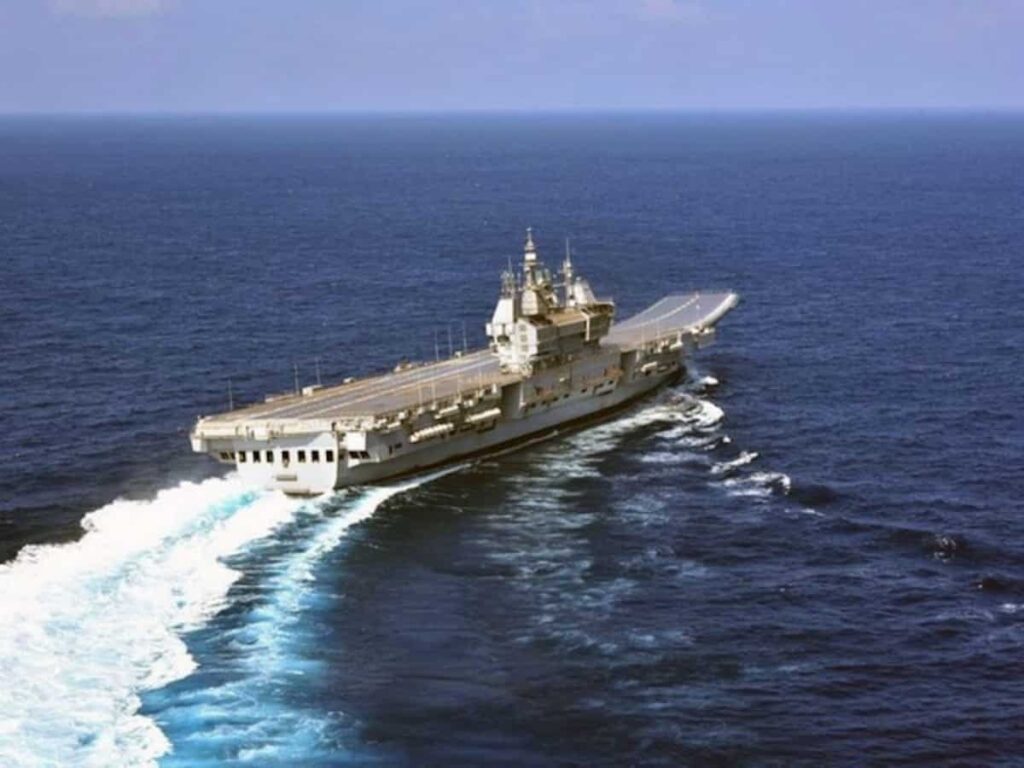In response to Pakistan’s missile attacks targeting Indian cities near the border, India’s defense forces have launched significant retaliatory strikes. Reports indicate that the Indian Navy’s INS Vikrant carried out a powerful strike on Karachi port, inflicting substantial damage on the area’s infrastructure.
As tensions intensify, India has launched missile and drone strikes on nine major cities across Pakistan, including Islamabad, Lahore, Karachi, Sialkot, and Bahawalpur, escalating the conflict.
Retaliation and Military Preparedness
The latest round of attacks came after Pakistani-origin drones and missiles targeted military stations in Jammu, Pathankot, and Udhampur, located along India’s international border in Jammu and Kashmir. India’s air defense system successfully intercepted several missiles, downing a Pakistani F-16 and two JF-17 jets.
Following these attacks, the Indian government has issued heightened security alerts across northern and western cities, with complete blackouts in border regions. Precautionary measures have led to the closure of schools in Rajasthan, Punjab, and Jammu & Kashmir, and police personnel leaves have been canceled in several states.

Strategic Moves and INS Vikrant’s Role
In the wake of Pakistan’s attempted aerial strikes on Indian territory, the Indian Navy has deployed its most formidable asset, the INS Vikrant, to the Arabian Sea. Commissioned in 2022, the aircraft carrier is not only an advanced warship but a self-reliant floating fortress capable of launching airstrikes, defending against missile threats, and operating at sea for extended periods. With Pakistan’s naval capabilities being comparatively weaker, INS Vikrant serves as a critical deterrent in the ongoing conflict.
Impact of INS Vikrant
INS Vikrant, spanning 262 meters in length and 62 meters in width, can carry over 1,500 personnel and launch up to 40 aircraft, including MiG-29K fighter jets and naval helicopters. The vessel’s extensive weaponry, including Barak-8 surface-to-air missiles, BrahMos cruise missiles, and several naval guns, enhances India’s naval strength and strategic dominance.
The aircraft carrier also plays a key role in multi-dimensional warfare, including cyber warfare, surveillance, and electronic operations. Built with over 75% indigenous content under India’s “Make in India” initiative, INS Vikrant represents the nation’s defense innovation and self-reliance.
Pakistan’s Limited Naval Capabilities
Unlike India, Pakistan lacks an operational aircraft carrier and has a comparatively outdated naval fleet. While India can deploy advanced warships like INS Vikrant and nuclear submarines, Pakistan relies on older submarines and smaller naval assets, putting it at a disadvantage in a prolonged maritime conflict.
Diplomatic and Military Implications
The deployment of INS Vikrant is not only a military action but a geopolitical signal, showcasing India’s resolve to respond with overwhelming force if provoked further. The aircraft carrier stands as a symbol of India’s naval superiority and its readiness to defend its borders in the face of escalating hostilities with Pakistan.
This development underscores the intensifying India-Pakistan conflict, where military strategies, naval dominance, and retaliatory actions are central to the evolving situation.
